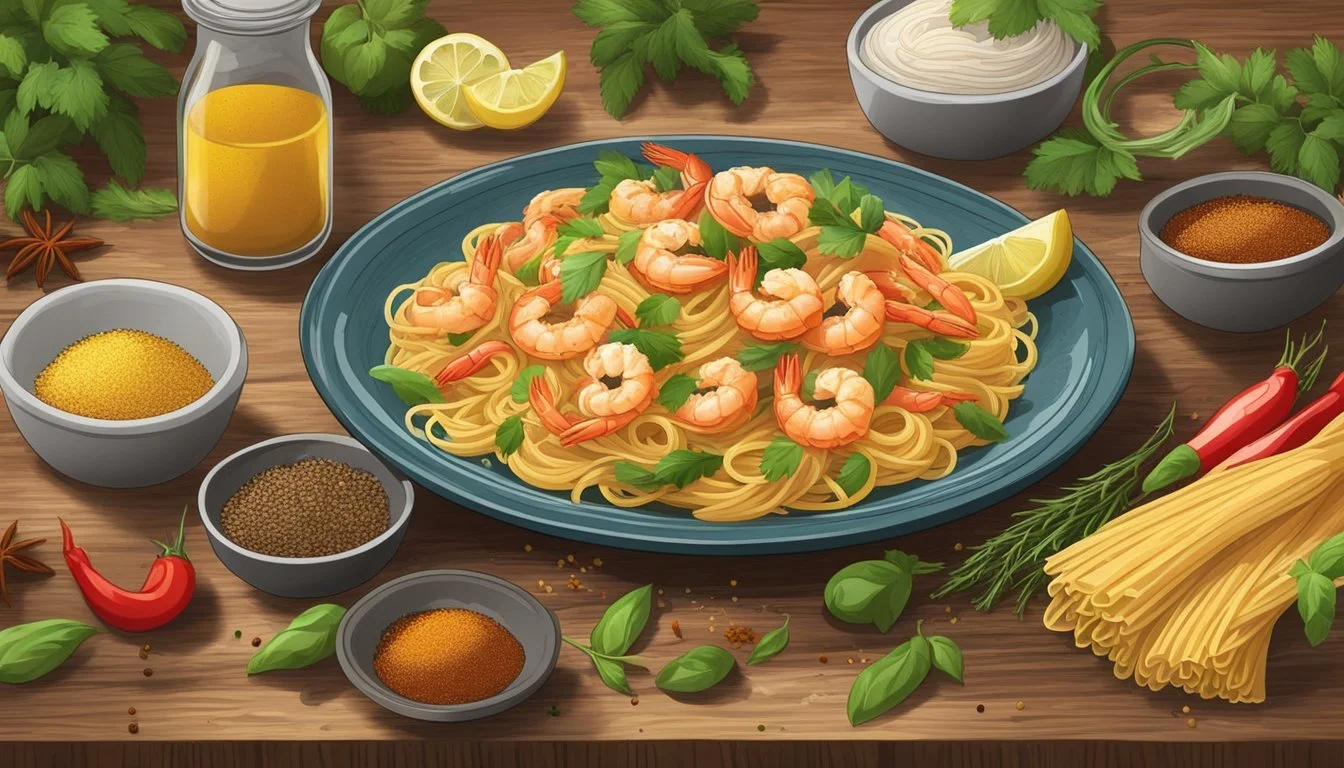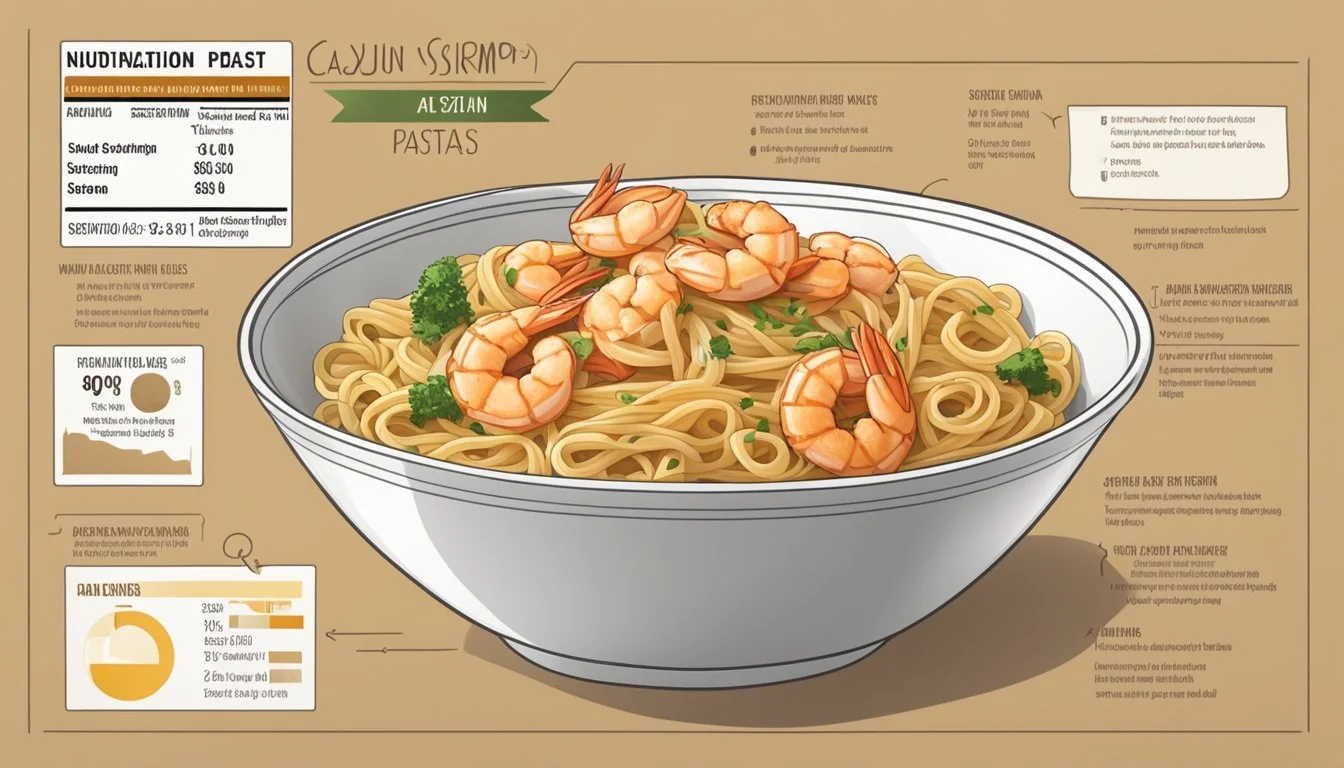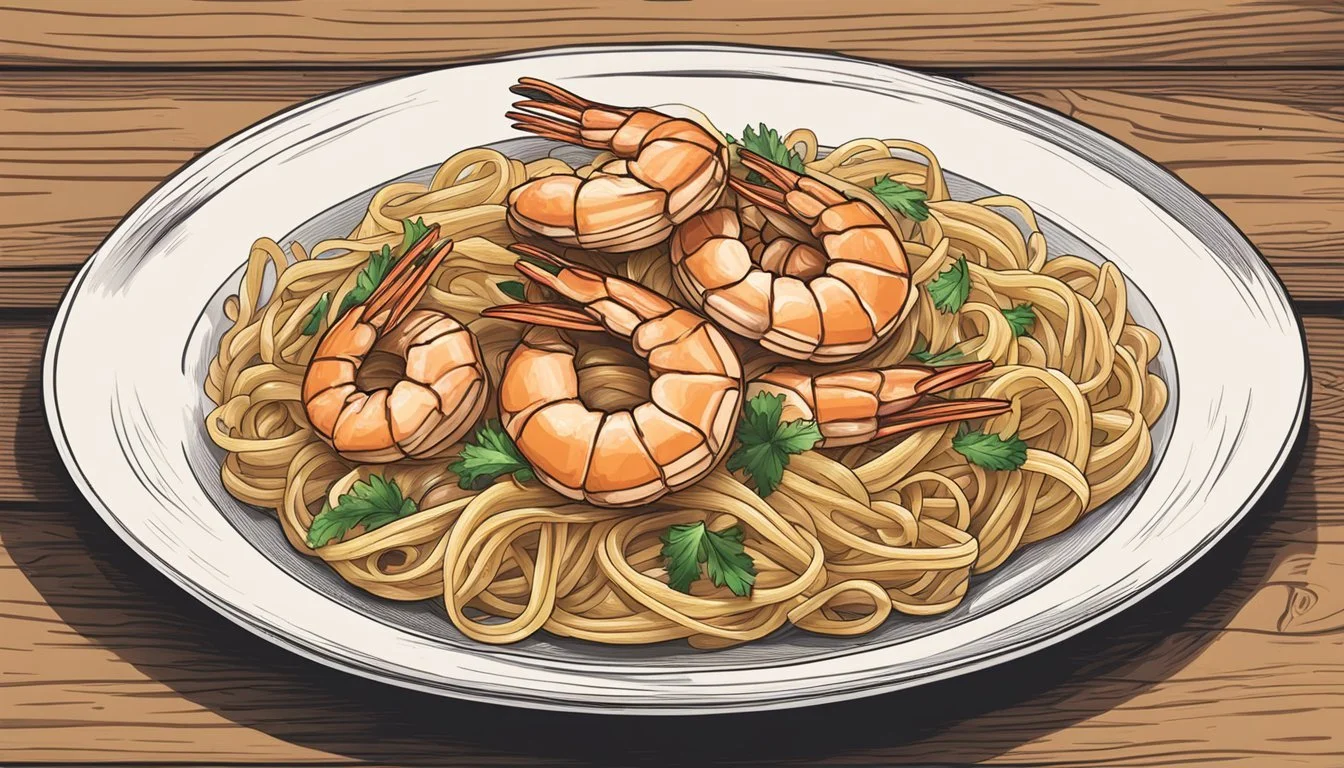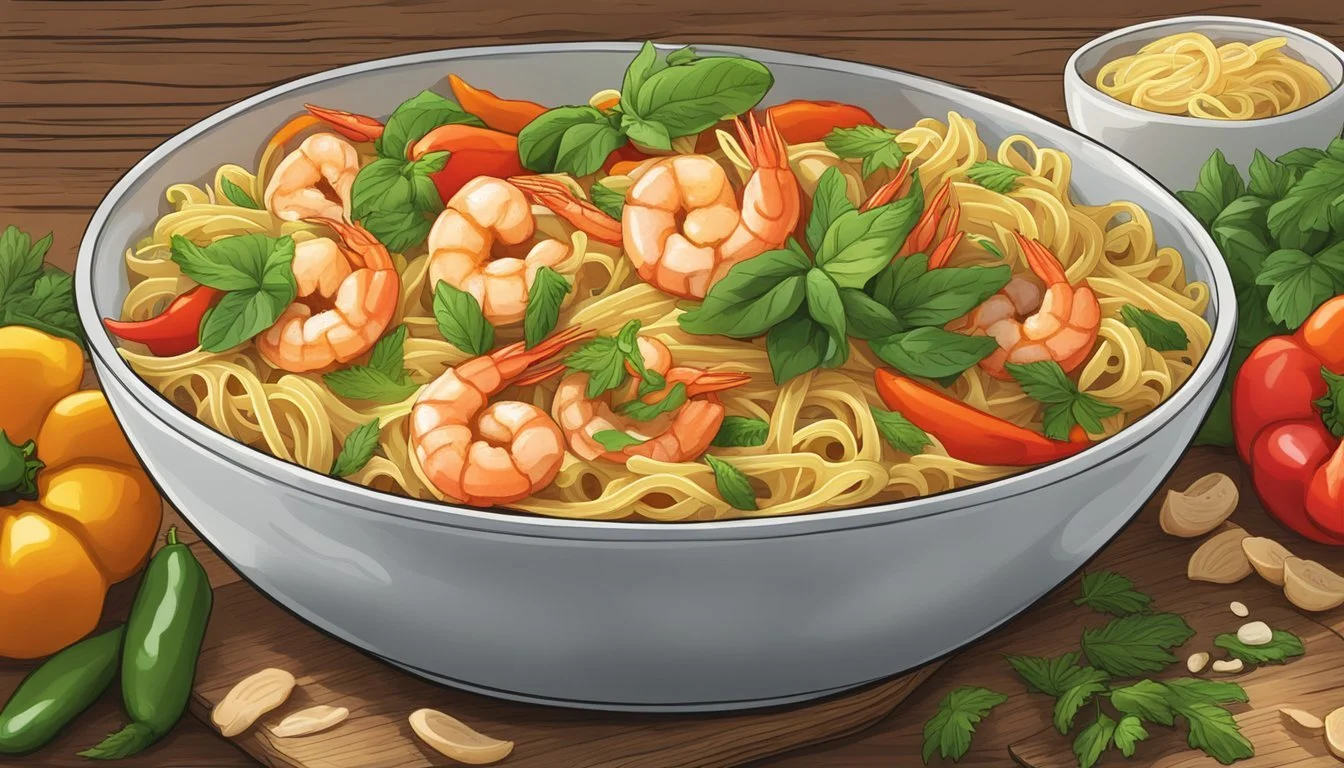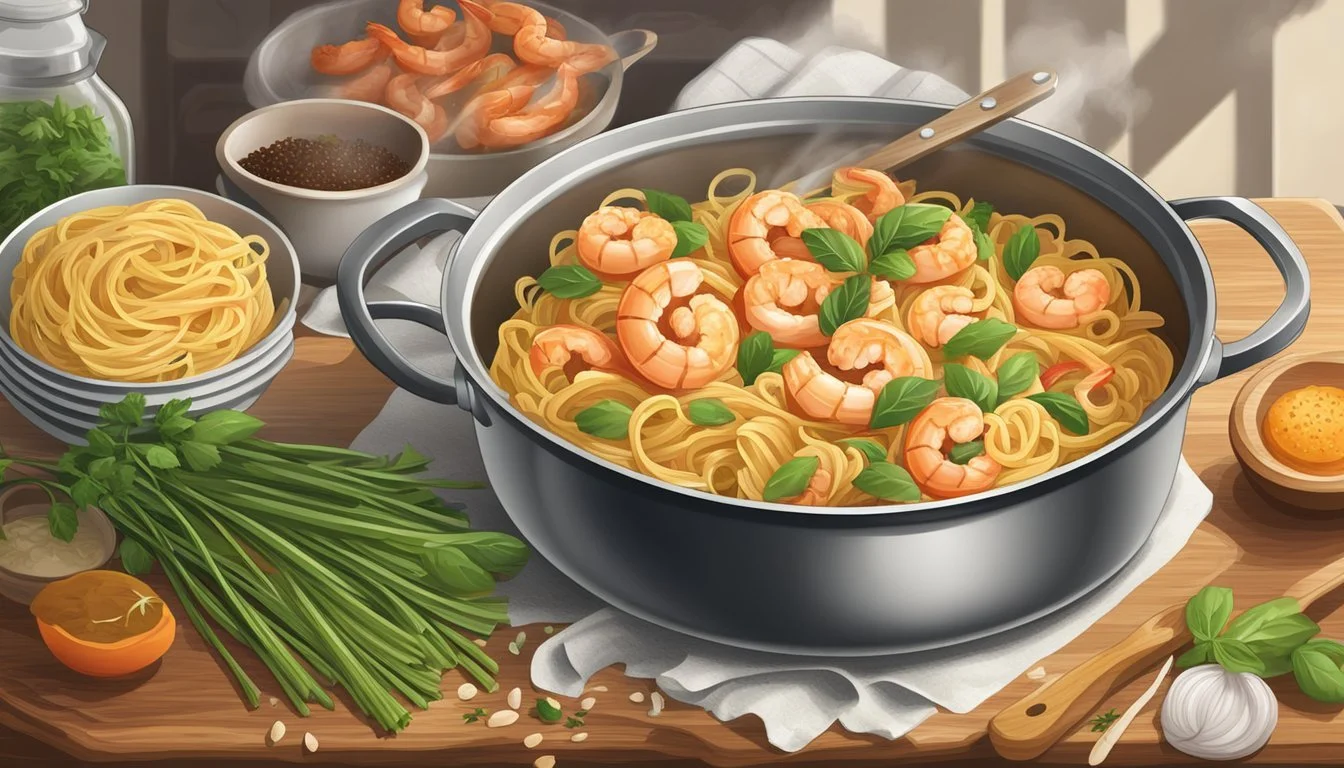How Long Does Cajun Shrimp Pasta Last?
Storage Tips and Shelf Life
Cajun Shrimp Pasta is a popular dish that combines the rich flavors of shrimp with a creamy, spicy sauce and perfectly cooked pasta. Many people wonder how long they can keep this delicious dish before it loses its freshness. Cajun Shrimp Pasta can be safely stored in the refrigerator for up to three days. Proper storage involves placing the pasta in an airtight container after it has cooled down to room temperature.
The recipe itself ensures that the flavors meld together beautifully, making it a favorite for those who love seafood and spice. It's essential to reheat the dish thoroughly before consuming it again to avoid any potential foodborne illnesses. The shrimp's texture and the sauce's creaminess can be maintained by reheating over medium heat and stirring occasionally.
Keeping in mind the freshness and quality of the ingredients used in Cajun Shrimp Pasta, the dish remains a satisfying meal even after a couple of days. The convenience of making this popular dish ahead of time and enjoying it later makes it an excellent option for meal prepping and busy weeknight dinners.
Ingredients and Flavors
Cajun shrimp pasta is a dish that combines a rich mix of proteins, vegetables, and spices to create a robust and hearty meal. The blend of Cajun seasoning along with fresh vegetables and proteins like shrimp or sausage defines its unique taste.
Key Ingredients
Shrimp: The star of the dish, preferably large shrimp, peeled and deveined, is used.
Pasta: Often linguine or fettuccine, cooked al dente, providing the base for the sauce.
Cream and Parmesan: These give the sauce a creamy texture and rich flavor. Freshly grated Parmesan adds a sharp, salty edge.
Tomato: Either diced fresh tomatoes or a can of diced tomatoes to add sweetness and acidity.
Olive Oil and Butter: Both are used to sauté the vegetables and proteins, adding a layer of richness.
Herbs and Spices
Cajun Seasoning: A crucial spice blend that often includes **paprika, garlic powder, onion powder, black pepper, ** and cayenne pepper.
Parsley: Fresh parsley is often used as a garnish, adding a fresh, slightly peppery flavor.
Garlic: Minced and sautéed for a deep, aromatic foundation in the sauce.
Oregano: Sometimes included for a hint of earthiness.
Proteins and Vegetables
Shrimp: Provides a sweet, briny flavor that complements the spice of the Cajun seasoning.
Chicken and Andouille Sausage: Added for extra protein and variety. Andouille sausage gives a smoky, spicy depth.
Bell Peppers: Red or green, diced and sautéed for a sweet, crunch.
Onion: Often diced and sautéed until soft, adding sweetness.
Mushrooms: Optional, but they add an umami flavor and meaty texture.
In combining these ingredients, the dish achieves its signature depth of flavor and satisfying heartiness. Each component, from the sautéed vegetables to the creamy, spiced sauce, plays a crucial role in creating the rich, balanced palate of Cajun shrimp pasta.
Preparation and Cooking Steps
Creating Cajun Shrimp Pasta involves a few essential phases: cooking the pasta, combining the ingredients effectively, and finishing the dish with specific touches to elevate its flavor. Each step ensures that the final product is a savory and cohesive meal.
Pasta Cooking Techniques
Start by boiling a large pot of salted water. The salt enhances the flavor of the pasta. Cook the pasta according to the package directions, until it reaches an al dente texture, which means it should be firm to the bite. This usually takes about 8-12 minutes, depending on the type of pasta.
To prevent the pasta from sticking, stir occasionally. Before draining, reserve a cup of pasta water; this starchy liquid is useful for adjusting the sauce's consistency later. Drain and set the pasta aside.
Combining the Ingredients
While the pasta cooks, measure and prep the other ingredients. Season the shrimp with Cajun seasoning, ensuring they are evenly coated. In a large skillet, heat olive oil or butter over medium-high heat. Add the shrimp and sauté for 3-5 minutes until they turn pink.
In the same skillet, sauté sliced sausages, julienned onions, and minced garlic until fragrant. This blend of spices and vegetables forms the flavor base. Once the aromatics are ready, mix in the cooked pasta, shrimp, and a splash of the reserved pasta water to meld the flavors together.
Final Touches
With the pasta and ingredients combined, let the dish simmer for a few minutes to thicken the sauce. Taste and adjust seasoning if necessary. For a creamy finish, stir in some heavy cream or cream cheese, along with additional Cajun seasoning if a spicier profile is desired.
Finally, garnish with freshly chopped parsley and a sprinkle of Parmesan cheese. Serve hot, ensuring each plate gets an even blend of shrimp, sausage, and pasta. Savor this flavorful dish with freshly baked bread or a side salad for a complete meal.
Nutrition Information
Cajun shrimp pasta offers a mix of essential nutrients, combining the rich flavors of seasoned shrimp, cream, and pasta. Important nutritional components to consider include its calorie content, macronutrient profile, and array of vitamins and minerals.
Caloric Content
Cajun shrimp pasta can be calorie-dense, largely due to ingredients such as cream, butter, and pasta. Typically, one serving (about 1.5-2 cups) contains approximately 600-800 calories. The exact number can vary based on portion size and specific preparation methods.
To manage calorie intake, consider portion control or using lighter alternatives for ingredients like cream or butter.
Macronutrients
Protein: Shrimp is a high-protein ingredient, contributing about 20-25 grams of protein per serving. This is beneficial for muscle maintenance and repair.
Carbohydrates: Pasta, being the primary source of carbs, offers around 50-70 grams per serving. It provides sustained energy but can vary depending on the type and amount of pasta used.
Fat: The dish contains significant fat content from butter and cream. Expect around 30-40 grams of total fat per serving, including 10-15 grams of saturated fat. Minimizing the use of cream or using low-fat alternatives can help reduce fat intake.
Vitamins and Minerals
Vitamins: Cajun shrimp pasta is a good source of Vitamin A, primarily from ingredients like cream and shrimp, contributing to vision and immune function. It may also provide some Vitamin C, especially if bell peppers or tomatoes are included in the preparation.
Minerals: This dish offers considerable amounts of calcium (from cheese and cream) and iron (from shrimp), essential for bone health and oxygen transport respectively. Additionally, it contains potassium, beneficial for heart health and muscle function.
Due to the seasoning and flavoring, such as Cajun seasoning, sodium levels can be high, with one serving containing about 800-1000 mg of sodium. This should be noted by individuals on a low-sodium diet.
By focusing on the ingredients used and their nutritional profiles, one can enjoy Cajun shrimp pasta as a balanced meal with moderation.
Storing Cajun Shrimp Pasta
Cajun Shrimp Pasta can be stored in the refrigerator or freezer to extend its life. Proper storage methods ensure the dish stays fresh and retains its flavor when reheated.
Refrigeration and Shelf Life
To keep Cajun Shrimp Pasta fresh, store leftovers in an airtight container in the refrigerator. The pasta will last up to 3-4 days if kept at a consistent temperature.
Proper sealing is crucial to prevent moisture loss and contamination. If using raw shrimp, be certain they were fresh before cooking to maximize the shelf life of your dish.
Regularly check for signs of spoilage like off smells or changes in texture. Ensuring your refrigerator stays below 40°F is also important.
Freezing Tips
For longer storage, freeze Cajun Shrimp Pasta. Use airtight containers or freezer bags to keep out air and moisture. The pasta can be frozen for up to 2 months.
To prevent the pasta from sticking together, consider freezing in individual portions. Use cooked or frozen shrimp in your pasta before freezing to ensure it maintains a good texture upon reheating.
Label containers with the date of freezing to track used-by dates.
Reheating Recommendations
When ready to eat, there are a few efficient reheating methods. The microwave, set on medium heat, can reheat covered Cajun Shrimp Pasta. Heat for about 90 seconds, stirring halfway through.
Alternatively, reheat on the stovetop at medium heat. Place the pasta in a non-stick pan, adding a bit of water or cream to maintain consistency while warming. Stir occasionally to ensure even heating and avoid overcooking the shrimp.
Always make sure the pasta is piping hot before serving to ensure it is safe to eat.
Dietary Considerations
When preparing Cajun Shrimp Pasta, it's important to take into account various dietary needs and preferences that may require ingredient substitutions or modifications for a balanced meal.
Gluten-Free Adjustments
To make Cajun Shrimp Pasta suitable for a gluten-free diet, replace regular pasta with a gluten-free alternative, such as rice pasta or corn pasta. Carefully check the seasoning ingredients to ensure they do not contain hidden gluten. Gluten-free Cajun seasoning is widely available, or you can make your own with spices such as paprika, garlic powder, and cayenne pepper.
Substitute any flour-thickened sauces with alternatives like gluten-free cornstarch or arrowroot flour to maintain consistency. Always verify the labels on packaged products, such as chicken broth, to confirm they do not contain gluten.
Vegetarian Options
For a vegetarian version of Cajun Shrimp Pasta, replace shrimp with vegetables or plant-based proteins. Consider using ingredients like bell peppers, zucchini, and mushrooms to add texture and flavor. Tofu or tempeh, marinated in Cajun seasoning, can serve as excellent protein substitutes.
Replace chicken broth with vegetable broth and ensure other components like Cajun seasoning and cheese are vegetarian. Heavy cream or heavy whipping cream can remain part of the recipe as they are vegetarian-friendly, but unsalted butter could be substituted with plant-based margarine or olive oil for a vegan adaptation.
Reducing Calories and Fat
To make the dish lower in calories and fat, use low-fat dairy alternatives. Substitute heavy cream or heavy whipping cream with half-and-half or a lighter cream. Olive oil can be used in moderation instead of butter for sautéing. Incorporate more vegetables to enhance the volume and nutritional content without significantly increasing calories.
Avoid deep-frying ingredients by opting for grilling or baking when appropriate. Select whole wheat pasta or other high-fiber options to increase satiety and reduce overall calorie intake. These modifications help maintain the dish’s flavor while making it a healthier option.
Serving Suggestions
Cajun shrimp pasta can be elevated with complementary sides and a thoughtful presentation. Consider harmonious pairings and eye-catching arrangements for a memorable dining experience.
Accompaniments and Pairings
Pair Cajun shrimp pasta with garlic bread to add a crunchy texture that contrasts with the rich, creamy sauce. The robust flavors of the garlic cloves will enhance the dish's bold taste.
Serving a fresh salad with a light vinaigrette is another excellent option. The crispness of the greens and the tangy dressing can balance out the creaminess of the pasta.
Grated parmesan cheese can be offered on the side for topping, adding a savory, umami note.
Consider vegetable sides, such as roasted asparagus or steamed broccoli, which complement the pasta without overpowering the dish.
Presentation Tips
For a stylish presentation, use a wide, shallow dish that allows the shrimp and pasta to be visible. Arrange the shrimp evenly across the top to showcase the main ingredient.
A sprinkle of fresh parsley or chives can add a pop of color and freshness.
Adding a few whole garlic cloves to the plate can enhance the visual appeal and hints at the flavors within.
Present the grated parmesan cheese in a small bowl to the side, allowing guests to add as much or as little as they prefer.
To complete the meal, serve garlic bread in a basket lined with a napkin, ensuring it stays warm and crisp until ready to eat.
Cooking Variations and Tips
Cajun Shrimp Pasta can be prepared using different cooking methods and innovative twists to suit diverse preferences and dietary needs. These variations help enhance the dish’s flavor and cater to various tastes.
Alternative Cooking Methods
One popular alternative method for preparing Cajun Shrimp Pasta is grilling the shrimp instead of cooking them in a skillet. Grilled shrimp can add a smoky flavor that complements the creamy Cajun sauce. Simply marinate the shrimp in Cajun seasoning and grill for 2-3 minutes on each side.
Another method is baking the dish. After preparing the pasta and shrimp, combine them in a baking dish, top with additional cheese, and bake at 375°F for about 10 minutes. This adds a crispy layer and melds the flavors.
For those with dietary restrictions, consider using a gluten-free pasta. Options like quinoa or brown rice pasta maintain the dish's texture without compromising on taste.
Creative Twists
To enhance the creaminess of the sauce, substitute heavy cream with a blend of cream cheese and milk. This not only makes the sauce richer but also adds a slight tangy flavor.
Adding vegetables like bell peppers, spinach, or cherry tomatoes can introduce freshness and additional layers of flavor to the pasta dish.
Another inventive twist is incorporating different spices. While the traditional recipe uses red pepper flakes and cayenne, experimenting with smoked paprika or even a touch of cinnamon can yield a unique and complex flavor profile.
Lastly, consider topping the dish with toasted breadcrumbs mixed with Parmesan and paprika. This creates a crunchy texture that contrasts nicely with the creamy sauce.
These variations and creative additions ensure that Cajun Shrimp Pasta remains exciting and customizable for various tastes and occasions.

